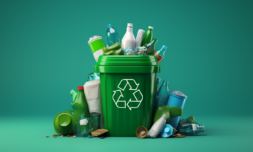The mantra ‘it’s better to be safe than sorry’ doesn’t necessarily apply to recycling. In-fact, putting something in the recycling bin without checking for the ubiquitous Mobius loop may do more harm than putting it in the regular trash.
We’ve all been there, stood between our recycling and rubbish bins shining an iPhone light on a wrapper to check for the Mobius logo. It’s our moral and civic duty, after all.
Pro-recycling messages from environmental outfits and corporations have become so commonplace today that throwing anything in the regular garbage instantly conjures a tinge of guilt in our subconscious.
In recent years, we’ve also become aware that categorising our recyclable trash doesn’t necessarily guarantee that it won’t end up in landfill or be burned. On the contrary, a staggering 91% of the Earth’s plastic doesn’t get recycled despite major economies employing these systems.
This has left the eco-conscious among us confused about exactly what to do with our throwaway packaging, and is the reason the question: ‘Can this be recycled?’ will be asked countless times throughout the globe today.
When unsure whether something can be recycled, you’d think that erring on the side of caution and throwing it in with the rest – an act known as ‘wishcycling’ – would be the best option.
According to those who know the ins and outs of the industry, however, this is a really damaging misconception.
Why wishcycling can do more harm than good
As Greenpeace’s ‘Downing Street Disaster’ campaign highlighted a few years back, our single throwaway items can quickly pile up and become a big problem… or crisis, if you’d prefer.
This is also the case when we contaminate the waste stream with rogue material that is not actually recyclable.
As it consolidates, this unwanted waste creates the need for more labour and makes the process of sorting through blue bags more expensive. Single use plastic bags in particular are described as something of a menace and often clog sorting systems and equipment.
Disposable coffee cups, ink cartridges, stryrofoam, and greasy takeaway boxes are among other big offenders for wishcycling, forcing recycling processors to send tons of would be useful material to landfill.
Facilities beset by this are routinely hit with a ‘contamination fee’ to make up for missing profits, and enough instances can even lead to communities shutting businesses down entirely.
Wishcycling, by nature, is usually an act of goodwill but puts too much trust in current recycling facilities. They’re not as efficient at sorting out junk as Gmail’s spam feature, unfortunately.




















